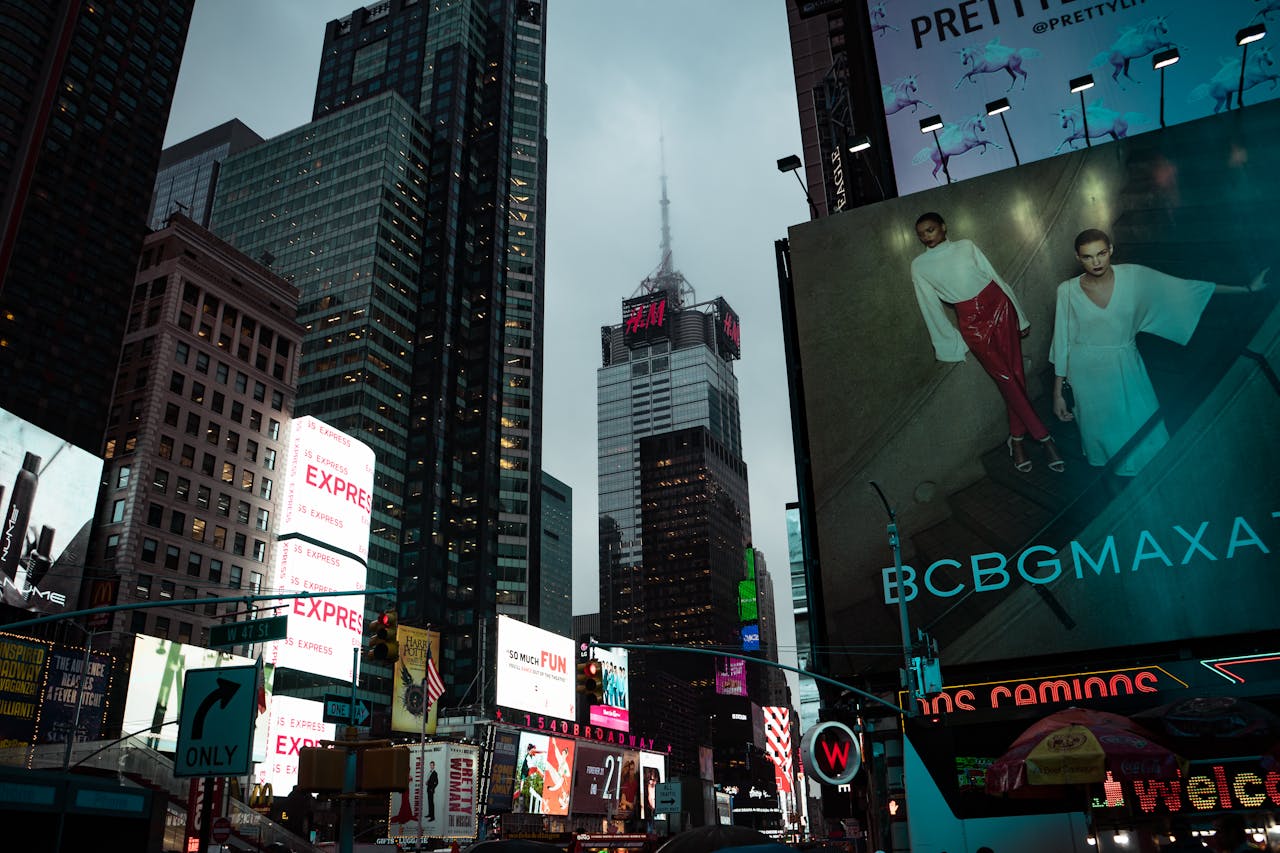In the constantly evolving landscape of advertising, one traditional tool continues to assert its relevance and effectiveness with flair: signage. From the neon lights of bustling cities to the subtle charms of vehicle wrapping, signage is an art form that doubles as a powerful influencer of consumer behaviour. In this comprehensive exploration, we’ll unveil the secrets behind using signage to not just capture attention, but to convert that into tangible business growth.
Signage in the Digital Age: A Timeless Ally in Business
With the burgeoning digital marketing trends, one might question the staying power of physical signage. Despite the dazzling allure of LED screens and interactive displays, traditional signage effortlessly weaves into the customer’s daily life, consistently reminding them of a brand’s presence.
The Visual Communication Advantage
Humans are visual creatures. Research has shown that people are more likely to remember something they see rather than something they read or hear. This is where signage excels. With the right design, colour scheme, and messaging, a sign can convey trustworthiness, professionalism, and even the emotional appeal of a brand.
Signage’s Versatility and Affordability
The physicality of signage lends itself to endless variations in form, size, and placement, making it a versatile tool for any business – from small local enterprises to global chains. Not to mention, when it comes to cost-effectiveness, signage can offer an impressive return on investment, particularly in terms of its longevity and its reach to a diverse audience.
Harnessing the Science of Signage
Beyond being aesthetically pleasing, signage is a psychology of sorts. It’s a silent salesman, guiding consumer decisions without the need for pushy advertising tactics. This section dives into the various design and strategic elements that make signage a science.
The Impact of Design on Customer Perception
The design of a sign is more than just a backdrop for a brand’s logo or message; it’s a potent tool that can dictate consumer perception. Psychologically, the right signage can make customers feel welcome, relaxed, or even elated — and they’re more likely to associate those emotions with your brand.
Colours, Fonts, and Symbols: Decoding the Language of Signage
Each element in a sign’s design has a specific role. Colour can trigger emotions and draw attention. Fonts can indicate the formality or friendliness of a brand. Symbols can convey complex messages with a single image. Understanding and marrying these elements can lead to more impactful signage.
The Science Behind Effective Messaging
Signage messaging should be clear, concise, and compelling. In a world rife with distractions, signs with ambiguous or lengthy messages risk being ignored. Crafting a sign requires an understanding of the intended audience and a keen eye for crafting memorable statements.
Placement and Context: Maximising Signage Impact
A sign is only as good as its visibility. Allegiance to zoning laws and strategic placement in high-traffic or focal areas can significantly enhance its effectiveness. Context — be it the architectural style of a building or the aesthetic of a given street — should also inform signage decisions, ensuring a cohesive and impactful message.
Digital Signage: The Evolution of Signage in a Tech-Driven World
Despite its staunch traditionalist appeal, signage has evolved to meet the demands of the digital era. Digital signage, with its dynamic capabilities, brings a new level of engagement and measurability that can boost a campaign’s effectiveness.
Interactivity and Real-Time Updates
Digital signage allows for interactivity that traditional signs simply cannot match. Touchscreens, QR codes, and mobile integration turn passive sign viewers into active participants. Furthermore, real-time updates can keep content fresh and relevant without the need for continuous physical rebranding.
Data Tracking and Analysis
One of the most significant advantages of digital signage is its ability to track and analyse consumer engagement. Heatmaps can show where people are looking and for how long. This level of insight is invaluable, allowing for refinement and improvement of campaigns in near real-time.
Sustainability and Cost-Efficiency
The digitisation of signage has also brought about environmental benefits, with less need for printing and a reduction in paper waste. In the long run, the cost of maintaining and updating digital signage can often be more economical than traditional methods.
Crafting a Signage Strategy that Sings
An effective signage strategy doesn’t happen by accident. It’s the result of careful planning, understanding, and foresight. Here we look at how to construct a strategy that harmonises with your overall marketing efforts.
Aligning Signage with Brand Values and Objectives
Signage should embody your brand’s ethos and reflect its unique promise to customers. Whether it’s communicating a message of innovation, tradition, luxury, or affordability, your signs should echo these values clearly and consistently.
Integrating Signage with Digital Marketing
Signage and digital marketing aren’t mutually exclusive; they’re complimentary. By integrating signage with digital campaigns through elements like hashtags, social media handles, and digital follow-ups, businesses can create a more holistic, omnichannel marketing approach.
Measuring Signage Success
Just as with any marketing effort, it’s essential to measure the success of your signage campaigns. Foot traffic, sales data, and customer feedback can provide valuable insights into the impact of your signs and highlight areas for improvement in future strategies.
Final Thoughts: The Art and ROI of Signage
In an age where innovations often overshadow the power of the past, it’s comforting – and strategically sound – to recognise the timeless role of signage in the advertising milieu. Combining artful design with strategic placement and a keen awareness of digital integration not only honours the past but propels businesses into a future of growth and engagement.
Effective signage is not a static display but a dynamic conversation starter. It provides a platform for stories, invitations, and calls to action that, when crafted and deployed with precision, can transform a business’s bottom line.
Ready to make your mark in the world of signage? Consider this your invitation to step into the vibrant world where business meets art, and where the right sign can make all the difference.

